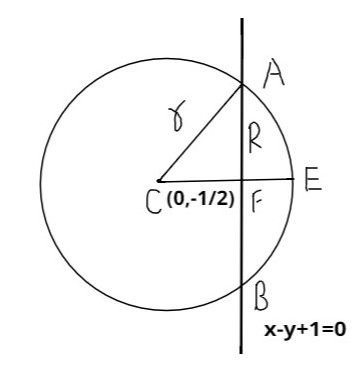Question
Question: If x - y + 1 = 0 meets the circle \[{x^2} + {y^2} + y - 1 = 0\] at A,B then the equation of the circ...
If x - y + 1 = 0 meets the circle x2+y2+y−1=0 at A,B then the equation of the circle with AB as diameter
A) 2(x2+y2)+3x−y+1=0
B) 2(x2+y2)+3x−y+2=0
C) 2(x2+y2)+3x−y+3=0
D) x2+y2+3x−y+1=0
Explanation
Solution
Hint: First of all draw the required figure then find the radius of the given circle also find the foot of perpendicular from the center of the given circle then you can easily see that the midpoint of AB lies on the radius of the circle and we can easily get the by pythagoras theorem.
Complete Step by Step Solution:
Let us try to draw the figure first

It is given that the equation of the circle is x2+y2+y−1=0
It can be written as
